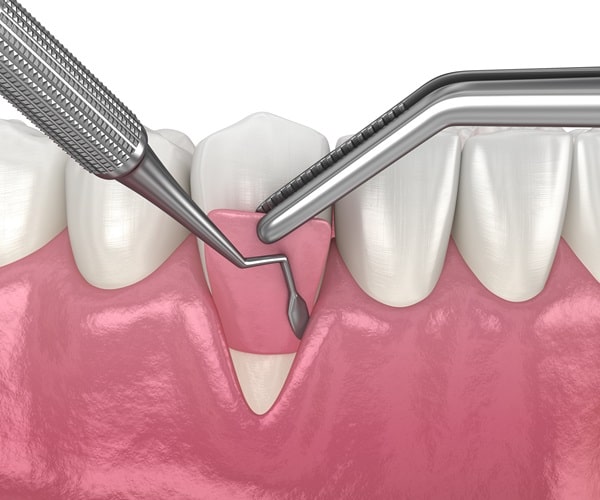Bayview Village Dental Specialists
Gum Grafting in North York
Gum Grafting
Some people resort to gum grafting to improve the appearance of their smile, if their teeth are naturally too long, making them uncomfortable or self-conscious while talking or smiling. However, gum tissue grafts are more common and necessary when we’re dealing with gum recession cases.
If you’re suffering from gum disease, which causes your gum tissue to start pulling away from your teeth, exposing more of your tooth or your tooth’s root, then we’re probably dealing with damage to the supporting bone tissue. This leads to having loose teeth and potentially leading to tooth loss. Of course this progression of the disease happens gradually over time, which makes gum recession hard to track and notice.

There are three different types of gum grafts typically performed by our local periodontist. They’re all very similar in that our local periodontist removes a piece of tissue from its original place and attaches it to the gum area being treated. The difference comes in the nature of the soft tissue being removed.
- The connective tissue graft uses tissue from under a flap of skin at the roof of your mouth. This tissue is called subepithelial connective tissue.
- The free gingival graft involves the use of the tissue directly at the roof of the mouth.
- The pedicle graft uses gum tissue from around or near the tooth needing repair. The tissue being used remains partially attached from one edge and is pulled over or down to cover the exposed root and is then sewn into place. This procedure can only be done if you have plenty of gum tissue around the tooth.
Our local periodontist can only decide on which type he’ll be performing on you after he examines your mouth and determines the best technique that works with the nature of your soft tissue. In some cases, graft material from a tissue bank can be used instead of the patient’s natural tissue. Our local periodontist will discuss all your gum grafting options with you and will inform you of which method will work best with you. The recovery from gum tissue graft procedures can take up to 2 weeks. That is for the sutures to heal properly, but generally patients can go on with their regular lives starting the following day. Our local periodontist will also provide you with detailed instructions regarding postoperative care, such as diet, physical activity, medications and dental hygiene routine. You’ll be in safe hands from start to finish.
ACCEPTING NEW PATIENTS

